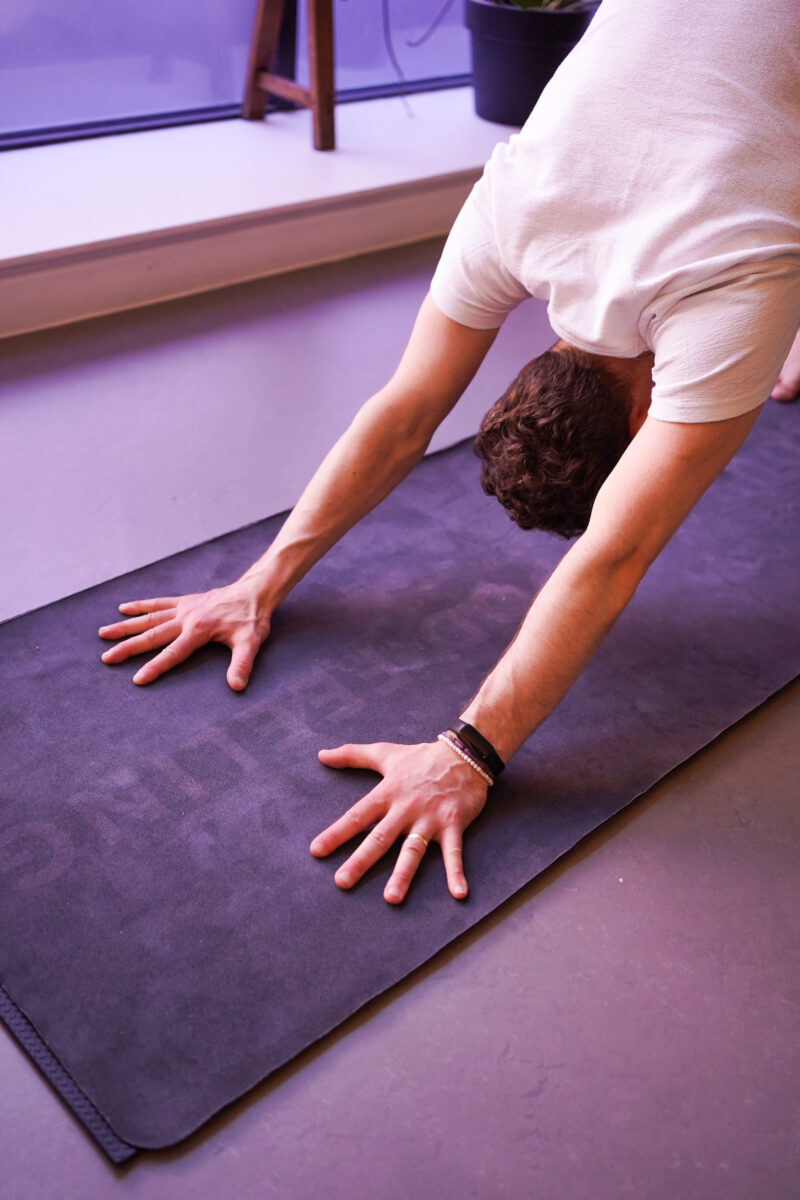With the weather warming up and the daylight stretching out, spring sees the crowds dusting off their trainers and rejoining the runners who’ve braved it through the winter. It’s the season of racing, running events and leisurely jogs. And why not? Running is a great form of exercise. It’s excellent for cardiovascular health and gets you outdoors sipping on that sweet fresh air.
Running can take its toll on the body, but thankfully a regular yoga practice offers many benefits for runners, from increased flexibility and injury prevention to improved breathing and stamina. Certain poses are especially great for people that run, particularly those that focus on creating openness in the lower body: hips, hamstrings, calves etc. Hotpod Yoga teacher (and avid runner) Colly has put together a list of the top five poses for post run yoga. Whether you’re in the belly of marathon recovery or returning from a quick jog around your local park, do your body a favour by incorporating these into your running recovery.
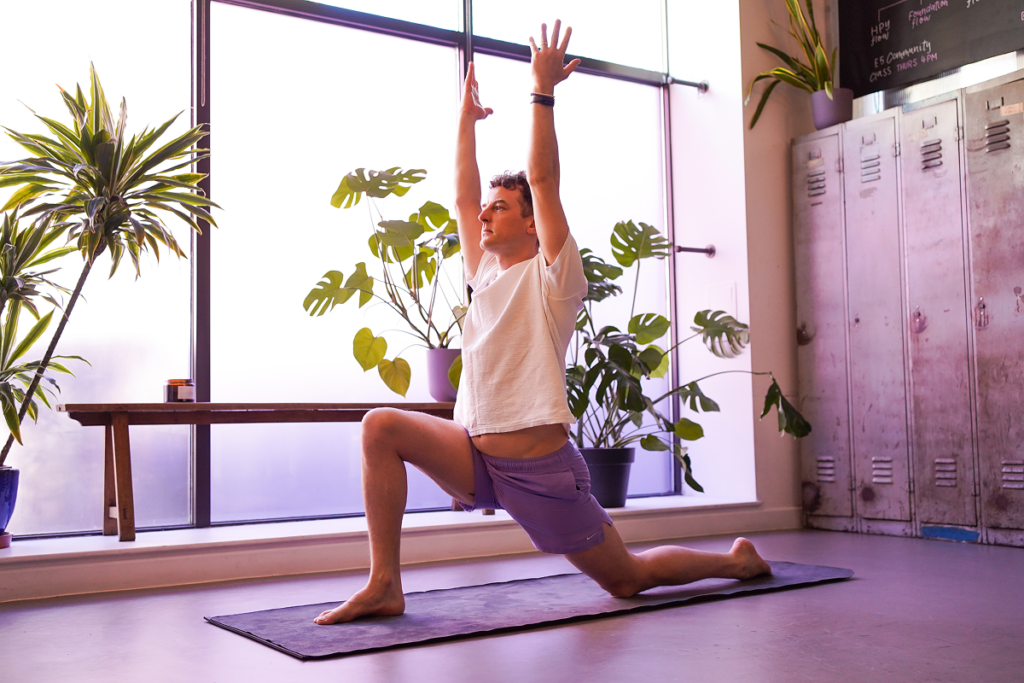
Low lunge.
The bread and butter of yoga poses for runners. Low lunge stretches out the hip flexors while building strength and stability in the hips.
You can play with variations to target the upper body too. Cactus arms with a lifted chest will stretch out the pectoral muscles. The arm swing while running can often lead to tension in the back, a twist will offer relief.
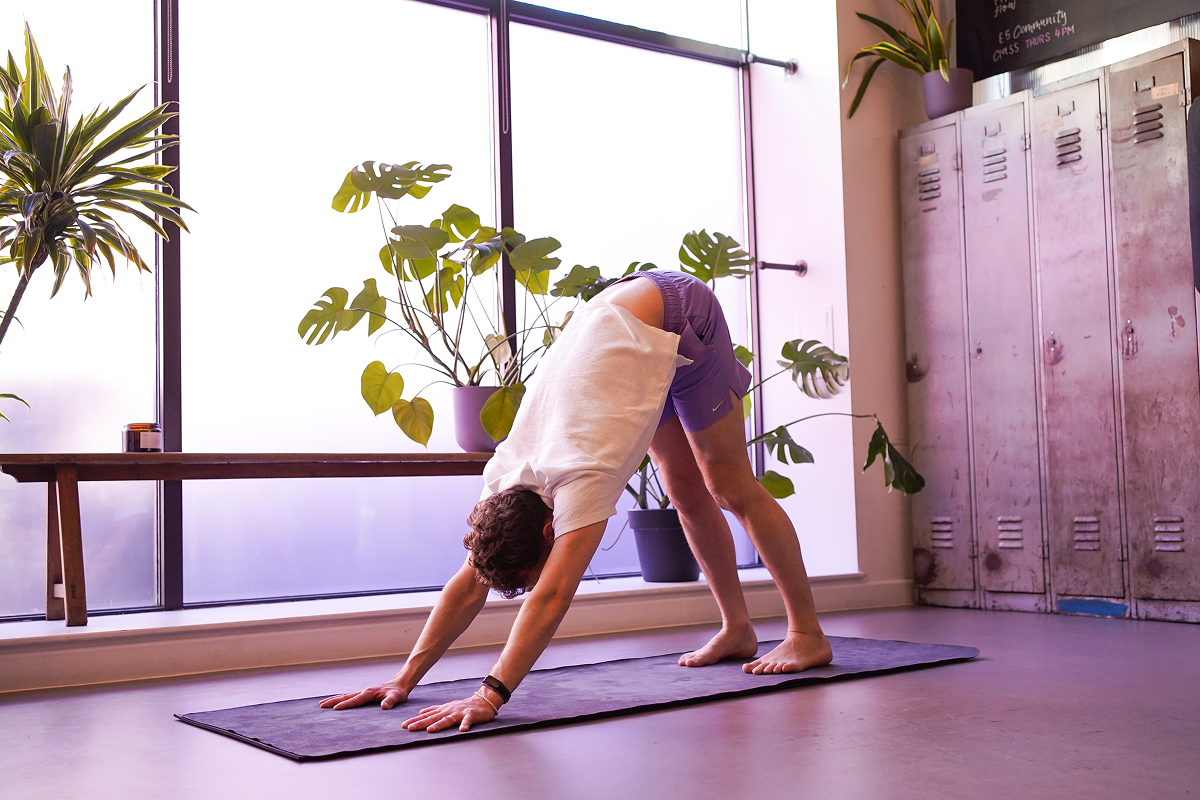
Downward Dog.
Downward facing dog earns its place in the top five because it targets the hamstrings and calves. You’ll really feel the stretch in this pose after a run. Ease into the shape by pedalling through both feet.
You could try stepping the feet in about ten centimetres or so to shorten the pose and gently draw the heels down the ground.
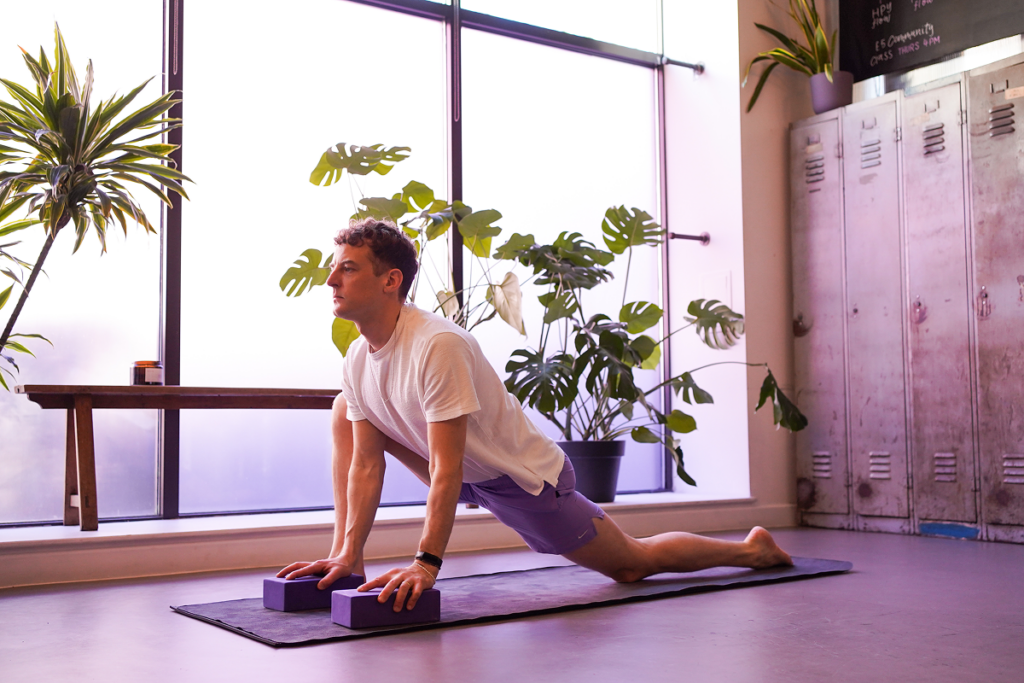
Lizard.
Similar to low lunge in stance, lizard’s slightly wider front foot will have you melting into a deeper hip opener. This pose has many variations, all of which are good for your post run recovery.
To add a quad stretch, bend the back leg, bring your heel to your glutes and reach the opposite side hand back (or use a strap) to grab the outer edge of the back foot.
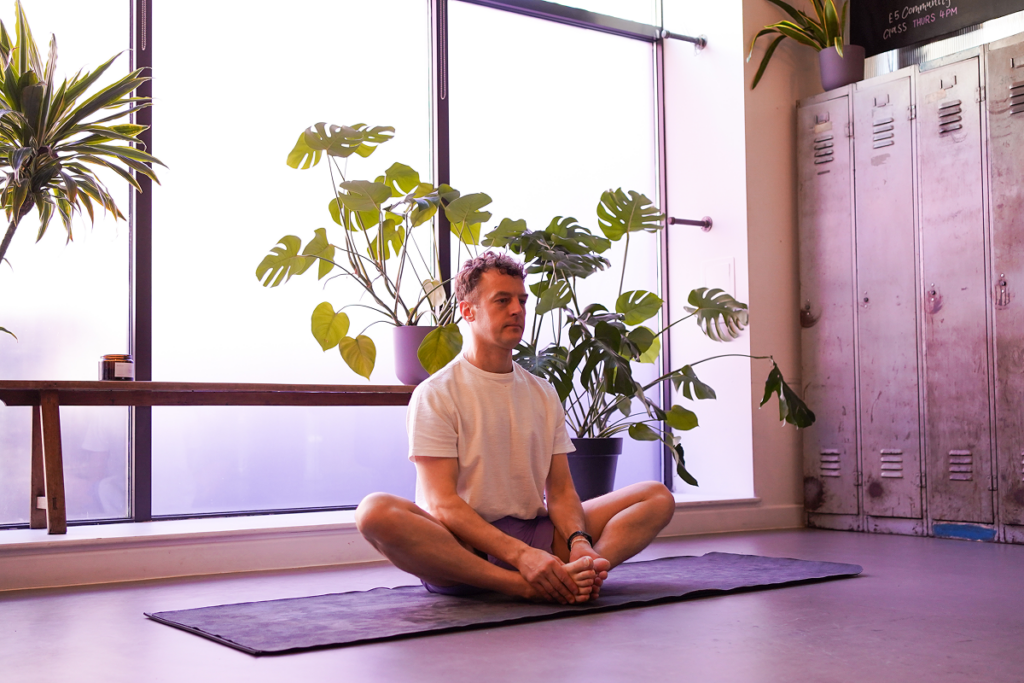
Butterfly.
Runners often suffer from tightness in the groin area and butterfly pose is a good way to offer a bit of relief. To feel the full effects, lengthen up through the crown of your head, relax your shoulders and gently draw the knees to the ground.
To increase flexibility further, the principles of PNF (Proprioceptive Neuromuscular Facilitation — a stretching technique that involves muscle contraction and relaxation) can be applied. Try pushing your knees up into your hands and your hands down onto your thighs, creating tension for a few seconds. Release the tension and you might find that you get a little deeper into the stretch.
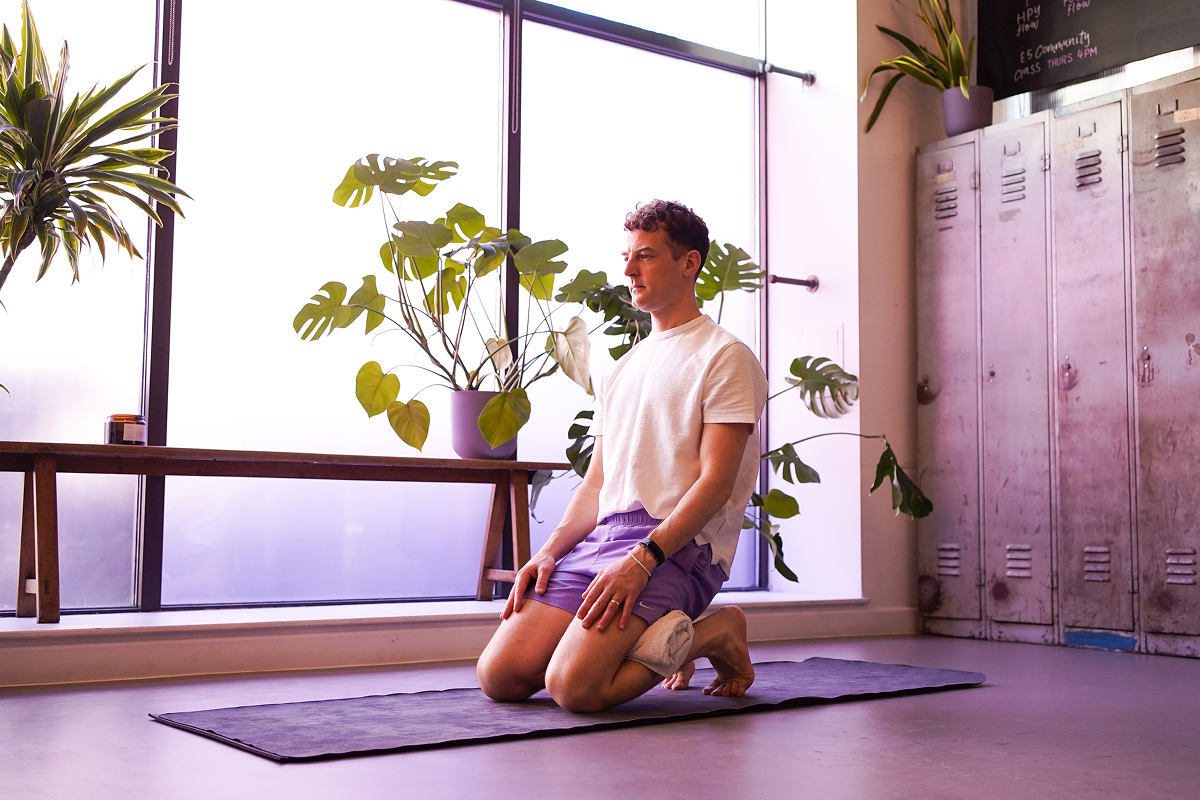
Thunderbolt.
Sometimes the poses that look the easiest can feel the opposite. Thunderbolt is definitely part of the deceivingly simple but actually intense club. If you’re tight in the lower legs and feet — as many runners are — this stretch is for you.
Thunderbolt is a great way to avoid one of the most painful side effects of running: shin splints. Roll up a mat and place it between under your knees to help stretch the fronts of the ankles and muscles around the shins.
If you’re training for a half marathon, marathon or even an ultra marathon you’ll already know the importance of stretching to promote fast race recovery. Ultimately, stretching and yoga allow muscles to relax and lengthen after exertion. But you don’t need a race or to even do long distance running to prioritise recovery. Running and recovery are always words best paired together.
Colly has previously run ‘Yoga for Runners’ workshops at Hotpod Yoga Brixton, and you can find more information about his teaching style and any tips on his website.
Follow Colly on Instagram @mistercollieman to find out more.
